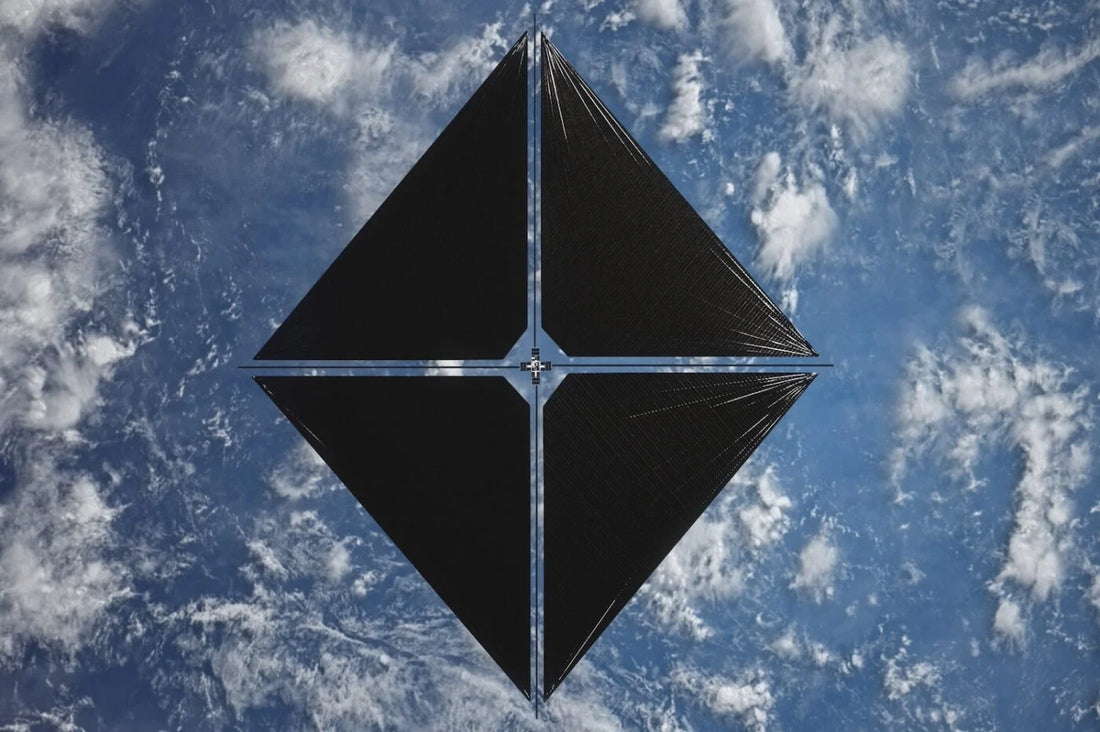NASA’s new solar sail technology is a major breakthrough for sustainable space travel and for the planet. Unlike traditional spacecraft, which rely on burning fuel and creating greenhouse gases, NASA’s breakthrough "Solar Sail System" uses sunlight to propel itself through space. This solar-powered innovation is not just a win for space exploration but also an example of how we can reduce our reliance on fossil fuels and lower greenhouse gas emissions.
How does the solar sail work?
Let's geek out for a moment...
The technology works by capturing photons from the Sun, using their energy to create thrust. While the force generated by the solar sail is minimal, in the vacuum of space, even small amounts of thrust can accumulate and move spacecraft over long distances. This method eliminates the need for traditional fuel, making space missions more efficient and less harmful to the environment. The ACS3 is orbiting at a higher altitude than the International Space Station to avoid atmospheric drag, allowing it to fully utilize solar energy for movement. Source 1, source 2
Greenhouse gases, primarily carbon dioxide (CO2), methane, and nitrous oxide, are the main drivers of climate change. These gases trap heat in Earth’s atmosphere, causing global temperatures to rise—a phenomenon known as the greenhouse effect. By reducing the need for fuel and its associated emissions, solar technologies like NASA's sail could be part of the larger solution to minimizing the production of these harmful gases.
NASA’s solar sail technology is a great example of how innovation in an industry like space exploration can also contribute to protecting our planet. As we look for ways to combat climate change, shifting toward renewable energy sources like solar power, both on Earth and beyond, is critical for a sustainable future.
Will solar sails replace rockets?
While NASA's solar sail technology is a promising development, it is not likely to replace rockets anytime soon. Solar sails generate only a small amount of thrust by harnessing the energy of photons from sunlight, which is effective in the vacuum of space where there is no resistance. However, the initial force they provide is very low compared to the immense thrust needed to overcome Earth's gravity during launch, or even to move a car.
Rockets, powered by chemical propulsion, produce powerful bursts of energy needed to lift spacecraft out of Earth's atmosphere. Solar sails, on the other hand, are better suited for long-duration space travel, where gradual acceleration over time can be effective without the need for additional fuel.
So what's the benefit?
In essence, solar sails are more likely to complement rockets rather than replace them. Rockets will still be needed to launch spacecraft into orbit, but once in space, solar sails could be used to propel missions farther, more efficiently, and without the need for additional fuel, making them an environmentally friendly solution for deep space exploration.
Want to take a small step here on earth to reduce your carbon footprint? Check out Weightless Dishwasher and Laundry Sheets >>


1 comment
Thanks for the info. Promising news.